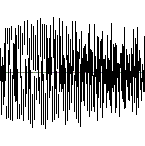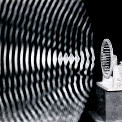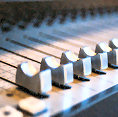 A few Homerecording.com regulars debate the merits of dithering. The conversation could easily have devolved into a flame war, but the participants kept it civil, and offered some great food for thought.
A few Homerecording.com regulars debate the merits of dithering. The conversation could easily have devolved into a flame war, but the participants kept it civil, and offered some great food for thought.
Some engineers even argue over which type of dither is best, claiming this algorithm is more airy sounding that that one, and so forth. But just because everyone believes this, does that make it true?
That quote comes from Ethan Winer’s great summary of his position on the matter – he’s squarely in the “dithering is usually not needed” camp.
I tend to agree with Ethan. Responsible mixing engineers don’t apply processing to a mix if they themselves don’t hear the effect of the processing. Simply put, if you can’t hear a difference, don’t make the change.
…
Unmitigated awesome: Daved Lee Roth’s vocal track from Runnin With The Devil, solo’d.
…
Converting Ikea bedside tables into studio racks: “the Rast bedside table makes a snug rack for music machines.”
…
Two unrelated sites feature famous songwriters discussing what went on behind the scenes as they wrote:
First, Joni Mitchell on the writing and recording of her most recent album:
When I recorded it, I was sick so a doctor prescribed some penicillin, which I had an allergic reaction to. I was delirious, stressed out, and we worked all night long. I was so delirious that I was playing way back on the beat… [I]n January 2007, I had demos of the Shine songs with me and played them to some friends at a party afterward. James Taylor told me that he had to play on this song. I wasn’t sure if anyone could because it was created in such a rare spirit. But James came in anyway and I asked him to play short figures like a saxophone. So you can hear fractions of James’ guitar playing here.
Jim Vallance’s site has some fantastic insight into the mind of a professional songwriter. Jim, who’s worked with Aerosmith, Ozzy, Bryan Adams, The Scorpions, and Thornley, meticulously lists every song he has ever written. The site is full of anecdotes and details about his creation process.
On our very first basement demo of “Summer of ’69” we started the song with the 12-string riff, exactly like the “break down” section in the middle of the song … but on subsequent demo’s we replaced the 12-string with a chunky 6-string intro. In fact, we toiled over the musical arrangement for several weeks, maybe longer. We recorded the song three or four different ways, and we still weren’t convinced we had it right! Bryan even considered dropping the song from the Reckless album.
Now, 20 years later, when I hear “Summer of ’69” on the radio, I honestly can’t remember what bothered us.
Tags: arrangement, hearing, myths, vocals
 Some of the easiest ways to improve your recordings are also the cheapest. In fact, the most effective techniques require no money at all.
Some of the easiest ways to improve your recordings are also the cheapest. In fact, the most effective techniques require no money at all. 
 The process of normalization often confuses newcomers to digital audio production. The word itself, “normalize,” has various meanings, and this certainly contributes to the confusion. However, beginners and experts alike are also tripped up by the myths and misinformation that abound on the topic.
The process of normalization often confuses newcomers to digital audio production. The word itself, “normalize,” has various meanings, and this certainly contributes to the confusion. However, beginners and experts alike are also tripped up by the myths and misinformation that abound on the topic.  The easiest way to move a track “back” in a mix is to lower its volume. This works because in our everyday lives, sounds get quieter as they recede from us, so we’re accustomed to the effect.
The easiest way to move a track “back” in a mix is to lower its volume. This works because in our everyday lives, sounds get quieter as they recede from us, so we’re accustomed to the effect. Here are some tips and techniques for treating vocal tracks with EQ while mixing.
Here are some tips and techniques for treating vocal tracks with EQ while mixing.  Pitch correction software has applications from restoration and mix-rescue to outright distortion of a voice or instrument. I’ll discuss some of the more tasteful uses of these auto-tune tools (whether the original from Antares, or a variant like the free
Pitch correction software has applications from restoration and mix-rescue to outright distortion of a voice or instrument. I’ll discuss some of the more tasteful uses of these auto-tune tools (whether the original from Antares, or a variant like the free  This tip arises in most discussions of good equalizer technique: “Use narrow adjustments when cutting frequencies, and wide adjustments when boosting.”
This tip arises in most discussions of good equalizer technique: “Use narrow adjustments when cutting frequencies, and wide adjustments when boosting.” A few Homerecording.com regulars debate the
A few Homerecording.com regulars debate the  I keep a collection of audio samples designed to help check my monitor setup. Test tones, essentially, that I use after I’ve moved my speakers or desk, to ensure the speakers still behave as they should.
I keep a collection of audio samples designed to help check my monitor setup. Test tones, essentially, that I use after I’ve moved my speakers or desk, to ensure the speakers still behave as they should. Over time, I’ve noted several questions that arise repeatedly on the web’s home recording forums. Each question reads as though it should have a simple answer, but none of them do. And indeed, the questions themselves betray their askers’ lack of experience with the subject.
Over time, I’ve noted several questions that arise repeatedly on the web’s home recording forums. Each question reads as though it should have a simple answer, but none of them do. And indeed, the questions themselves betray their askers’ lack of experience with the subject.